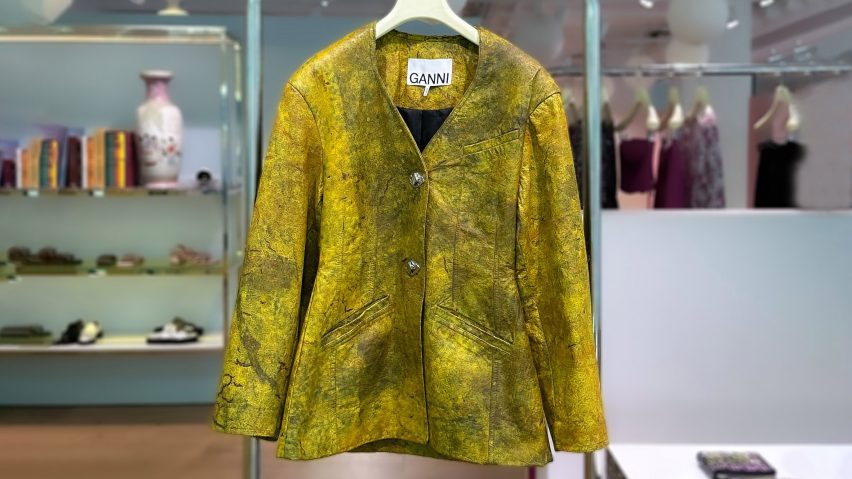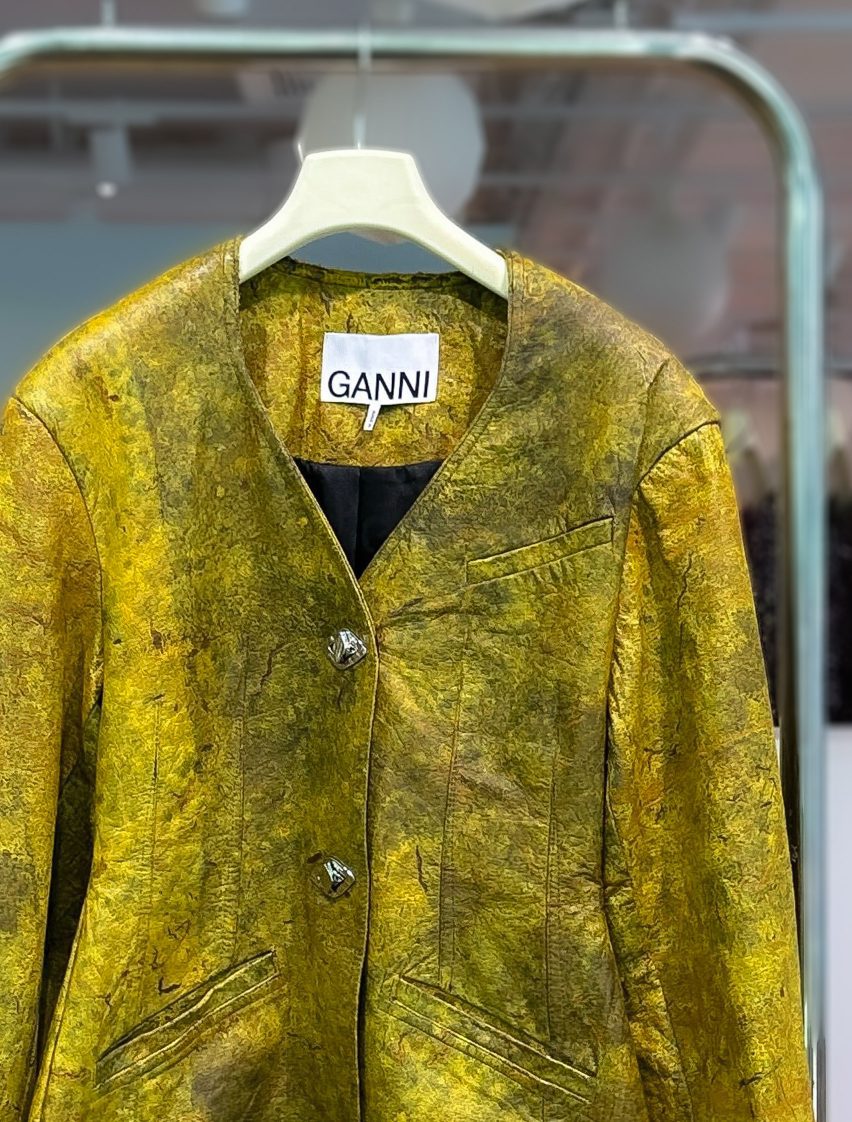
Ganni unveils faux leather jacket made using bacteria instead of cowhide
Fashion brand Ganni and materials company Polybion have debuted a jacket grown by bacteria during the Global Fashion Summit in Copenhagen, marking a milestone for bacterial cellulose as a leather alternative.
The prototype outerwear piece was fabricated by feeding bacteria with mango fruit waste from the agriculture industry, converting the sugar it contains into cellulose as part of the bacteria's natural digestive process.
Once stabilised, this bacterial cellulose membrane was tanned much like cowhide and used by Ganni to create a mottled yellow blazer finished with decorative silver buttons.
The jacket made its debut during the sustainability forum Global Fashion Summit in Copenhagen.
A growing cohort of designers and material researchers have experimented with using bacterial cellulose in recent years to create everything from "backyard compostable trainers" and leather-like lamps to cosmetic packaging that looks like paper or plastic.
But Polybion co-founder Axel Gómez-Ortigoza says the collaboration with Ganni marks "the first showcase of a product by a global brand" using the material, which the company has named Celium.
"This marks the culmination of a decade of work in bacterial cellulose," he told Dezeen.
Bacterial cellulose could be more sustainable than mycelium
As the fashion industry races to find more sustainable substitutes for leather, a number of brands including Ganni, Adidas and Hermès have already started experimenting with mycelium leather, which is grown from the root structure of fungi.
But Polybion claims that its Celium leather made from bacterial cellulose requires fewer natural resources in its production. It also has a quarter of the carbon footprint compared to mycelium leathers while producing higher yields, according to a preliminary lifecycle assessment (LCA).

"This is due to a state-of-the-art vertical biofabrication system similar to indoor farming that is very efficient and uses solar-powered electricity and heat, going from waste to finished material under the same roof," Gómez-Ortigoza said.
The process relies on bacteria that have been genetically modified to produce cellulose with the performance qualities to rival both real and fake leathers.
The resulting material already outperforms mycelium leather, Gómez-Ortigoza claims, and is "about 80 per cent of the way [there] compared to animal leather".
Leather alternative still relies on petroleum-based plastics
However, Celium still relies on a polyurethane coating for durability combined with a synthetic or bio-based backing – depending on the application.
Alongside any dyes or pigments used, this significantly impairs the material's ability to be discarded without adverse effects on the environment at the end of its life.
"There is still a road to walk when it comes to performance in order to out-perform animal leathers," Gómez-Ortigoza says.
"This will be achieved by a steady learning and improvement cycle of both the stabilisation process, the growth process and via gene-tuning of the strains."
Currently, Polybion is also working on increasing the output of its factory in Irapuato, Mexico, which the company claims is the "world's first industrial-scale facility for the production of bacterial cellulose".
The facility is on track to reach is maximum production capacity of 1.1 million square feet per year by the end of 2023.